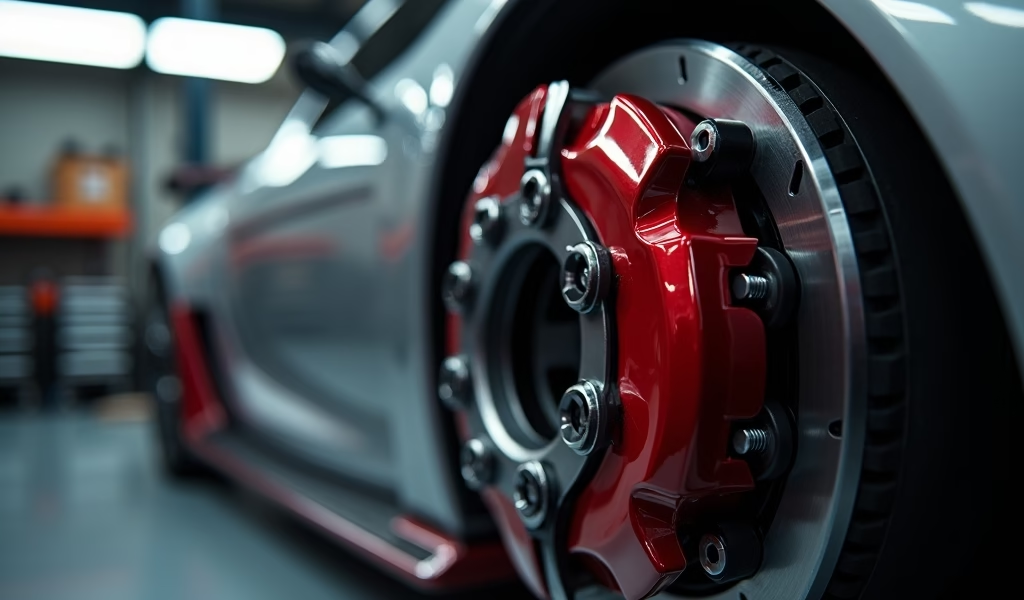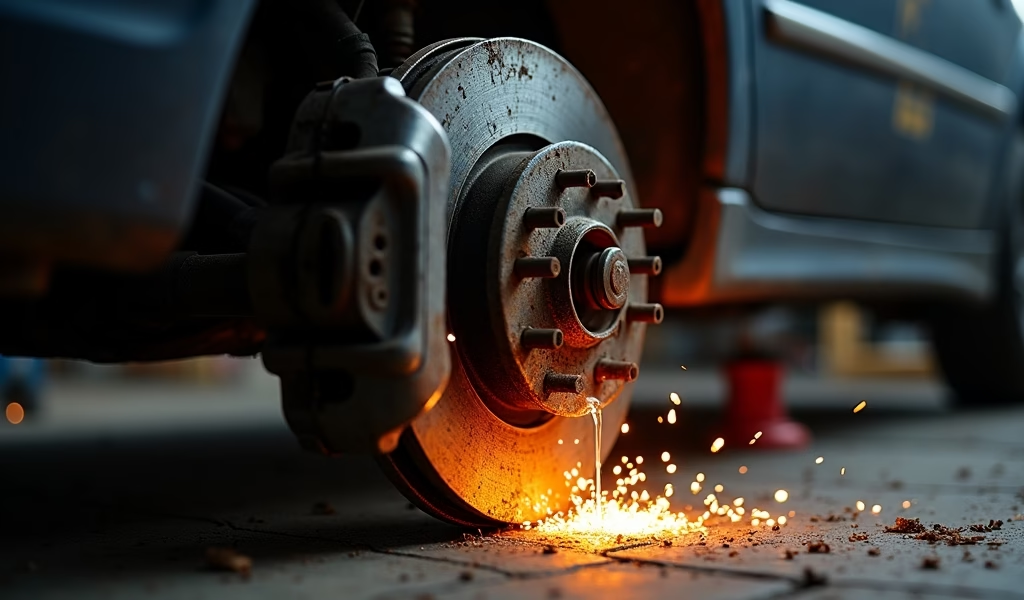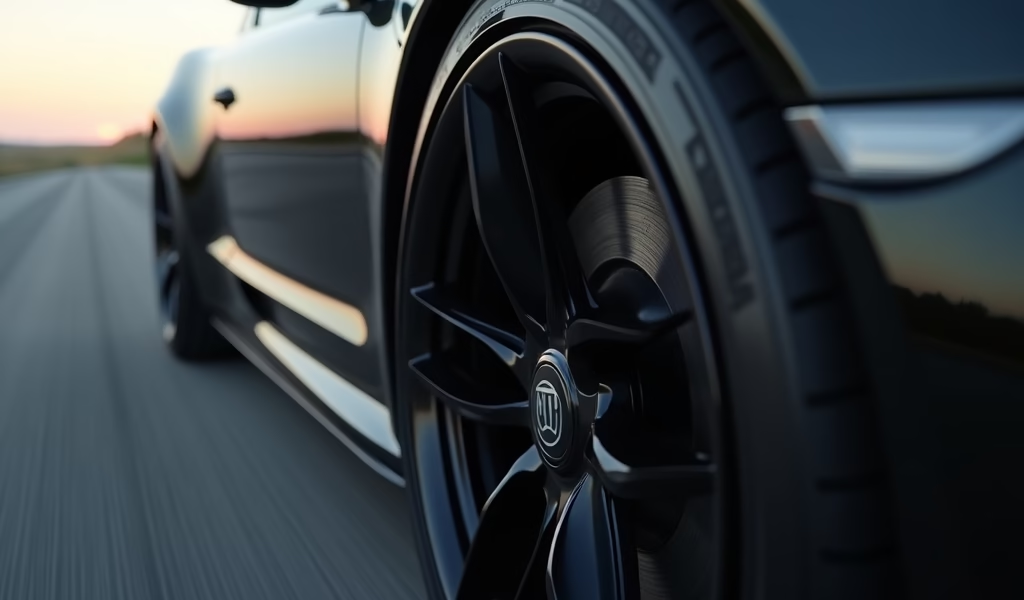Overview
This article explains how disc brake caliper piston area affects braking performance, offering five key improvement strategies including optimizing piston size, calculating ideal measurements, upgrading calipers, maintaining efficiency, and balancing front-to-rear brake bias. The author emphasizes that understanding and optimizing this often-overlooked component can significantly enhance stopping power, safety, and brake system longevity for both everyday drivers and performance enthusiasts.
Table of Contents
- Understanding Disc Brake Caliper Piston Area
- Why Piston Area Matters
- Hack #1: Optimizing Piston Area for Improved Braking
- Hack #2: Calculating the Ideal Piston Area
- Hack #3: Upgrading Calipers for Better Performance
- Hack #4: Maintaining Piston Area Efficiency
- Hack #5: Balancing Front-to-Rear Brake Bias
- Conclusion
- Frequently Asked Questions
Understanding Disc Brake Caliper Piston Area
When it comes to stopping power, the disc brake caliper piston area plays a crucial role that many drivers overlook. As a mechanic who’s spent two decades elbow-deep in brake systems, I can tell you that understanding this component can transform your vehicle’s braking performance. The piston area refers to the surface area of the caliper piston that pushes against the brake pad when you press the pedal.
Think of it as the muscle behind your braking force. Just like how a larger muscle can exert more strength, a larger piston area can generate more clamping force against your rotors. This seemingly small component determines how efficiently hydraulic pressure converts into stopping power.
Modern vehicles typically use disc brake systems because they dissipate heat better than drum brakes and provide more consistent performance. At the heart of this system lies the caliper with its pistons. Single-piston designs are common in everyday vehicles, while performance cars might sport four, six, or even eight pistons per caliper for enhanced stopping capability.
Why Piston Area Matters
The disc brake caliper piston area directly influences your vehicle’s stopping power through a simple physical principle: pressure equals force divided by area. When you press your brake pedal, the master cylinder generates hydraulic pressure that travels through your brake system’s hydraulic lines to the caliper pistons.
Here’s where the magic happens. The same hydraulic pressure acting on a larger piston area produces more force against the brake pads. This is why performance vehicles often feature multi-piston calipers – they effectively increase the total piston area applying force to the brake pads.
But bigger isn’t always better. The ideal piston area depends on several factors including vehicle weight, typical driving conditions, and how the braking force is distributed between front and rear wheels. As vehicles have evolved, engineers have fine-tuned these relationships to optimize braking performance while maintaining control and preventing premature wear.

Hack #1: Optimizing Piston Area for Improved Braking
One of the most effective ways to enhance your vehicle’s braking performance is through strategic piston area optimization. Unlike many expensive upgrades, this approach focuses on matching your braking system’s characteristics to your driving style and vehicle needs.
For daily drivers seeking improved stopping power without breaking the bank, consider upgrading from a single-piston to a dual-piston caliper setup. This modification effectively increases the total piston area without requiring extensive modifications to your brake system. The result? More consistent braking performance and better pedal feel with minimal investment.
Performance enthusiasts have additional options. Fixed calipers with differential piston sizes (where leading pistons are smaller than trailing pistons) can dramatically improve initial bite and modulation. This design accounts for the dynamic weight transfer that occurs during braking, ensuring optimal pad contact throughout the stop.
Here’s a practical approach to optimization:
- Assess your current braking needs and limitations
- Consider your typical driving conditions (city, highway, track)
- Look for calipers that provide 15-20% more total piston area for noticeable improvement
- Ensure any upgrade is compatible with your master cylinder’s output
- Factor in your vehicle’s weight distribution
Remember that increasing piston area affects your brake pedal ratio calculation, potentially requiring adjustments to the master cylinder size to maintain proper pedal feel. This balancing act is crucial – too much piston area without adequate hydraulic pressure can result in a soft, unsatisfying brake pedal.
Hack #2: Calculating the Ideal Piston Area
Determining the optimal disc brake caliper piston area involves more science than guesswork. As a mechanic, I’ve seen countless brake upgrades fail because they didn’t account for the mathematical relationships involved. Here’s a simplified approach to calculating the right piston area for your vehicle.
The basic formula accounts for vehicle weight, desired deceleration rate, and the coefficient of friction between pad and rotor. For a typical passenger vehicle, aim for a total front caliper piston area between 7-9 square inches for responsive braking. Heavier vehicles naturally require more piston area to generate adequate clamping force.
A practical calculation method looks like this:
- Determine your vehicle’s weight distribution (typically 60/40 front/rear)
- Calculate the maximum braking force needed (weight × desired deceleration)
- Factor in your brake pad’s coefficient of friction (typically 0.3-0.5)
- Account for the effective radius of your brake rotor
- Solve for the required piston area
For those less mathematically inclined, several online calculators can help determine ideal piston area based on your vehicle’s specifications. These tools, backed by engineering principles, take the guesswork out of brake system design.
One often overlooked factor is the impact of caliper piston diameter on brake pad wear patterns. Larger pistons distribute force more evenly across the pad surface, leading to more uniform wear and longer pad life. This consideration alone can make a well-calculated piston area upgrade worth the investment for high-mileage drivers.
Hack #3: Upgrading Calipers for Better Performance
When stock braking performance isn’t cutting it anymore, upgrading your calipers can transform your vehicle’s stopping capability. The disc brake caliper piston area plays a starring role in this improvement. I’ve guided countless customers through this process, and the results are often remarkable.
For street applications, moving from a single-piston floating caliper to a four-piston fixed caliper design can provide dramatic improvements. Fixed calipers apply force more evenly across the brake pad, resulting in more consistent braking and better modulation. The increased total piston area also enhances initial bite – that confidence-inspiring grab when you first press the pedal.
When shopping for upgraded calipers, consider these key factors:
- Total piston area (more important than piston count)
- Caliper rigidity (stiffer calipers flex less, providing more consistent performance)
- Heat management capabilities
- Compatibility with your current rotors or ease of rotor upgrading
- Weight (aluminum calipers reduce unsprung mass)
A word of caution from years in the shop: ensure your brake master cylinder can adequately supply the volume of fluid needed for larger pistons. In some cases, upgrading to a master cylinder with a larger bore diameter becomes necessary to maintain proper pedal feel with significantly increased caliper piston area.
Many quality aftermarket companies like Wilwood, Brembo, and StopTech offer comprehensive upgrade kits that include appropriately sized master cylinders paired with their enhanced calipers. According to research from the Society of Automotive Engineers, properly matched components can improve stopping distances by up to 15% while enhancing fade resistance.

Hack #4: Maintaining Piston Area Efficiency
Even the most perfectly sized disc brake caliper piston area becomes ineffective without proper maintenance. After years working on everything from family sedans to race cars, I can tell you that caliper piston maintenance is among the most neglected aspects of brake care.
The efficiency of your caliper pistons depends largely on their ability to move freely and maintain a proper seal. Over time, heat cycles and exposure to the elements can cause pistons to stick or seals to deteriorate. This results in uneven pad wear, reduced braking performance, and potentially dangerous braking inconsistencies.
Here’s my proven maintenance routine to keep your pistons performing optimally:
- Inspect caliper pistons during every brake pad change
- Clean pistons thoroughly using brake-specific cleaner
- Check for corrosion, scoring, or pitting on piston surfaces
- Replace caliper seals at recommended intervals (typically every 50,000 miles)
- Use high-quality silicone-based brake lubricant on piston boots
Pay special attention to the piston boot – that rubber dust shield that protects the piston. A torn boot allows moisture and contaminants to reach the piston, leading to corrosion and sticking. Replacing this inexpensive part proactively can save you from costly caliper replacements down the road.
For those in regions where road salt is common, consider upgrading to stainless steel pistons if your vehicle came equipped with standard steel ones. Engineering studies show that stainless steel pistons resist corrosion significantly better, maintaining their smooth surface and efficient operation much longer in harsh environments.
Hack #5: Balancing Front-to-Rear Brake Bias
The final and perhaps most sophisticated hack involves optimizing the disc brake caliper piston area relationship between your front and rear brakes. This balance, known as brake bias, determines how braking force is distributed between the front and rear wheels.
Most vehicles are designed with a front-bias braking system, typically around 60-70% front and 30-40% rear. This accommodates the forward weight transfer that occurs during braking. However, modifications to your vehicle or driving style might necessitate adjusting this balance for optimal performance and safety.
Fine-tuning brake bias through piston area adjustments can be approached in several ways:
- Installing calipers with different piston sizes front vs. rear
- Changing to pads with different friction coefficients
- Adding an adjustable proportioning valve
- Modifying the master cylinder bore size or using a dual master cylinder setup
- Upgrading to an electronic brake force distribution system
For everyday driving, a properly balanced system provides consistent stops without premature rear wheel lockup (which can cause dangerous skids) or excessive front-end dive. Performance drivers might prefer a more aggressive front bias for maximum stopping power, while off-road enthusiasts may want more rear braking to help with directional control on loose surfaces.
I’ve found that many vehicles benefit from a slight increase in rear caliper piston area when upgrading front brakes significantly. This maintains the factory-intended bias while improving overall stopping power. Remember that your vehicle’s electronic stability systems are calibrated to work with a specific brake bias, so dramatic changes may affect these systems’ performance.
Conclusion
Mastering the intricacies of disc brake caliper piston area isn’t just for professional mechanics – it’s a practical skill that can enhance your vehicle’s performance, safety, and longevity. These five hacks provide a comprehensive approach to understanding and optimizing this critical component of your braking system.
From calculating the ideal piston area to maintaining piston efficiency and balancing brake bias, each strategy builds upon the foundation of understanding how hydraulic pressure converts to stopping power. Whether you’re looking for improved everyday braking or preparing for high-performance applications, these techniques will serve you well.
Remember that braking systems work as integrated units, so changes to piston area should be considered in relation to other components like master cylinders, brake lines, and pad compounds. Take an incremental approach to modifications, testing thoroughly after each change to ensure safety and performance meet your expectations.
By applying these principles and maintenance practices, you’ll experience more consistent, powerful, and reliable braking performance – giving you confidence behind the wheel and peace of mind on the road.
Frequently Asked Questions
How does caliper piston size affect braking performance?
Larger piston areas generate more clamping force with the same hydraulic pressure, resulting in stronger braking power. However, larger pistons require more fluid volume, which can affect pedal travel and feel.
Can I mix different piston sizes on the same axle?
No, piston sizes should be identical on the left and right sides of the same axle to ensure balanced braking. Uneven piston sizes could cause the vehicle to pull to one side during braking.
How often should caliper pistons be inspected?
Caliper pistons should be inspected during every brake pad change, typically every 30,000-50,000 miles. More frequent inspections are recommended for performance driving or severe conditions.
Will increasing caliper piston area improve brake fade resistance?
Yes, larger piston areas can improve fade resistance by distributing heat across a larger brake pad surface area. This helps maintain consistent braking performance during repeated hard stops.
Do I need to upgrade my master cylinder when installing calipers with larger piston areas?
Often yes, especially with significant increases in total piston area. A properly sized master cylinder ensures adequate fluid volume and maintains appropriate pedal feel with larger caliper pistons.

